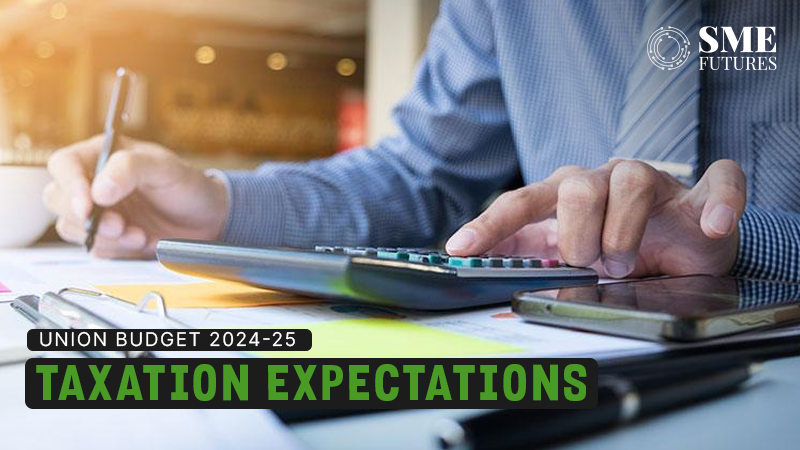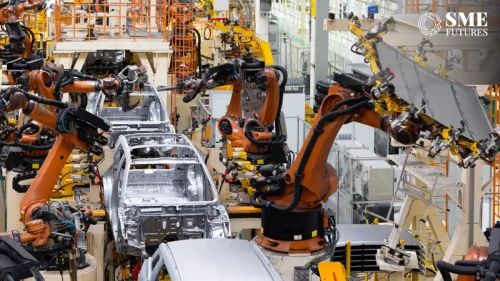As India gears up for the Union Budget 2025-26, industry leaders and tax experts share their expectations on taxation reforms that could shape the country’s economic trajectory. From direct taxes, corporate taxes to GST rationalisation, here’s a roundup of expert insights.
Simplified direct tax policies for enhanced compliance
Either it is middle class or a business, everyone is looking for simple processes, high exemptions mainly for ease of doing business, convenience, savings etc.
Budget 2025 can be a ray of hope. However, CA Aditya Sesh, Founder and Managing Director of Basiz Fund Services anticipates minimal changes to tax exemptions under provisions like Section 80C, 80D, or 24(b).
The likely adjustment could be an increase in the minimum tax slab under the new tax regime, aligning with the government’s focus on simplifying taxation and incentivising middle-class taxpayers to transition to this framework, he says.
According to him, a significant portion of individual tax returns are either nil returns or refund claims, indicating limited revenue potential from this segment. “The government’s emphasis is shifting towards enhancing tax compliance and curbing evasion, targeting high-income individuals and businesses avoiding taxes,” says Sesh.
In the last Budget, the government rationalised the capital gains structure in terms of the holding period of assets and tax rates.
On a broader scale, he foresees the introduction of a new Direct Tax Code to modernise tax laws, alongside targeted incentives for MSMEs to address supply-side constraints. “The Budget must prioritise infrastructure development to sustain economic growth while ensuring private sector participation in capital expenditure,” he adds. Addressing challenges in MSME and manufacturing sectors will be critical for balanced recovery and competitiveness.
Adding in Rony Antony, Partner & Leader, Corporate Tax (South), Tax & Regulatory Services at BDO India notes that despite initial steps towards a Direct Tax Code, progress has stalled since the introduction of a draft, suggesting a current focus on rectifying existing legislation rather than introducing a new framework.
Rationalisation of TDS
Antony highlighted several critical areas requiring attention within current tax laws, particularly advocating for the simplification of Tax Deducted at Source (TDS) obligations to alleviate taxpayer burdens through rationalised rates and streamlined provisions.
“But a few quick fixes that can help taxpayers is the rationalization of TDS obligations. Currently, there are multiple provisions in the TDS sections that are creating issues for taxpayers. Rationalisation of rates is one area that can help. Additionally, rationalisation of provisions to take care of litigious issues that have emerged could help taxpayers with certainty,”
Another area is to curb litigation on matters that have attained finality. With significant amounts stuck in litigation, this poses an issue for taxpayers who want certainty and the tax department that wants to collect taxes.
“The Department continues to litigate matters which have even attained finality at the Supreme Court. The government can think of issue-based guidelines to tax department which can curb the scourge of litigation,” emphasises Antony.
Rationalising GST and startup support
Dinkar Sharma, Company Secretary & Partner at Jotwani Associates, stresses the importance of simplifying GST slabs for ease of compliance. “A broader tax base through technological integration can enhance compliance and streamline indirect taxation,” he says. Sharma also advocates targeted incentives for startups and MSMEs, particularly in green energy and technology, to fuel sectoral growth.
Additionally, tax relief for individuals under the new tax regime and infrastructure development incentives could boost consumption and investment, driving economic momentum.
Advocate Ayush Jindal- Founder of Be Legal also discusses making processes simple. “Resolving the old tax regime, simplifying taxes levied on capital gains etc. would offer more respite, while boosting the investors’ confidence.
“The budget should be focused on simplifying the laws around capital gains and easing the overall compliance,” he says.
Extend the corporate tax concession
India’s direct tax reforms have achieved significant milestones in recent years, with measures like the reduction in corporate tax rates, rationalisation of withholding taxes, and stabilisation of capital gains taxation driving investment and economic confidence.
“The Vivad se Vishwas scheme has been instrumental in resolving legacy tax disputes, reducing litigation, and allowing resources to focus on current tax priorities,” notes Rohinton Sidhwa, Partner at Deloitte India in an analysis. While these efforts have bolstered India’s tax framework, Sidhwa emphasises opportunities for further refinement to enhance ease of doing business and administrative efficiency.
Sidhwa highlights key asks for the upcoming Budget, including extending the concessional corporate tax rate of 15 per cent for new manufacturing companies and Global Capability Centres (GCCs). “This measure has been vital in attracting foreign investment and boosting India’s economic goals, and its continuation could solidify India’s position as a global investment hub,” he explains.
Additionally, clarity on taxation for contingent share transfers and exemption for intra-group transfers would align India’s tax policies with international best practices. On rationalising withholding tax rates, Sidhwa suggests a simplified structure to address ambiguities and reduce litigation, proposing four categories of rates based on transaction types. “Streamlining these processes will encourage compliance and improve the ease of doing business,” he adds.
Indirect taxes: Simplification and export promotion
With initiatives like “Make in India” and “Aatmanirbhar Bharat,” the government has prioritised restructuring tariff structures to support domestic manufacturing while encouraging global investments.
Mahesh Jaising, Partner at Deloitte India, notes, “The Budget must balance incentivising domestic industries with facilitating integration into global value chains to attract global players in a competitive geopolitical landscape.”
One of the key areas of focus is customs-related litigation. An amnesty scheme, akin to “Sabka Vishwas,” could resolve longstanding disputes and alleviate the judicial backlog. “Such a scheme would provide businesses, especially smaller enterprises, with a clean slate to move forward while resolving pending matters worth crores,” Jaising suggests.
Also, procedural streamlining under the Customs (Administration of Rules of Origin under Trade Agreements) Rules, 2020, is essential to facilitate the use of Free Trade Agreements (FTAs). “Simplifying compliance requirements and adhering to stipulated timelines for verification would reduce operational hardships for importers,” he explains.
Another pressing expectation is addressing challenges in the Manufacturing in Customs Bonded Warehouse (MOOWR) scheme. The upfront payment of IGST under recent amendments could affect working capital for manufacturers, potentially impacting the “Make in India” initiative.
Jaising recommends, “Deferring or exempting IGST and compensation cess under the MOOWR scheme would enhance India’s global competitiveness.” Moreover, enabling price confidentiality during MOOWR-to-MOOWR transfers and resolving delays in Special Valuation Branch (SVB) investigations are critical. “Time-bound investigations and an expanded scope for advance rulings would significantly improve trade facilitation and business certainty,” he adds.
Mergers & Acquisitions: Tax certainty and consolidation
The Indian M&A landscape has witnessed significant momentum, with deal values surging 66 per cent during the first nine months of 2024 compared to the same period in 2023. This growth reflects a shift towards high-value transactions, as businesses increasingly use cross-border mergers and acquisitions to expand international footprints, acquire advanced technologies, and consolidate operations.
Vivek Gupta, Partner at Deloitte India, in his analysis underscores the need for budgetary measures that simplify tax structures and enhance the ease of doing business, saying, “Streamlined tax policies are crucial for sustaining this growth and ensuring India remains an attractive investment destination.”
One of the critical expectations revolves around taxation on contingent consideration. Investors often incorporate clauses based on performance milestones in shareholder agreements to incentivise promoters. However, a lack of clarity on whether such contingent considerations should be taxed at the time of transfer or receipt creates uncertainty.
“Deferring taxation until the contingency is realised would bring much-needed tax certainty for both parties,” Gupta suggests. He also highlights the unintended tax implications under Section 56(2)(x) of the Income Tax Act for off-market trades involving listed shares, calling for amendments to avoid tax liabilities arising from market price fluctuations during transaction finalisation.
Another pivotal recommendation includes introducing a tax consolidation regime to address challenges faced by large conglomerates with multiple subsidiaries. Gupta explains, “Group tax consolidation would reduce compliance costs, facilitate efficient use of tax losses, and lower litigation for both taxpayers and authorities.”
Furthermore, clarifying policies around internal restructuring and internalisation of group value in India could strengthen shareholder confidence and boost India’s standing as a global M&A hub. “These measures would not only streamline transactions but also ensure long-term benefits for the Indian economy,” Gupta adds.
As the Union Budget 2025-26 approaches, the focus remains on simplifying tax compliance, fostering investment, and supporting critical sectors like MSMEs, manufacturing, and startups. By aligning tax policies with contemporary economic needs, the government can create a robust framework to sustain growth and enhance India’s competitiveness on the global stage.











